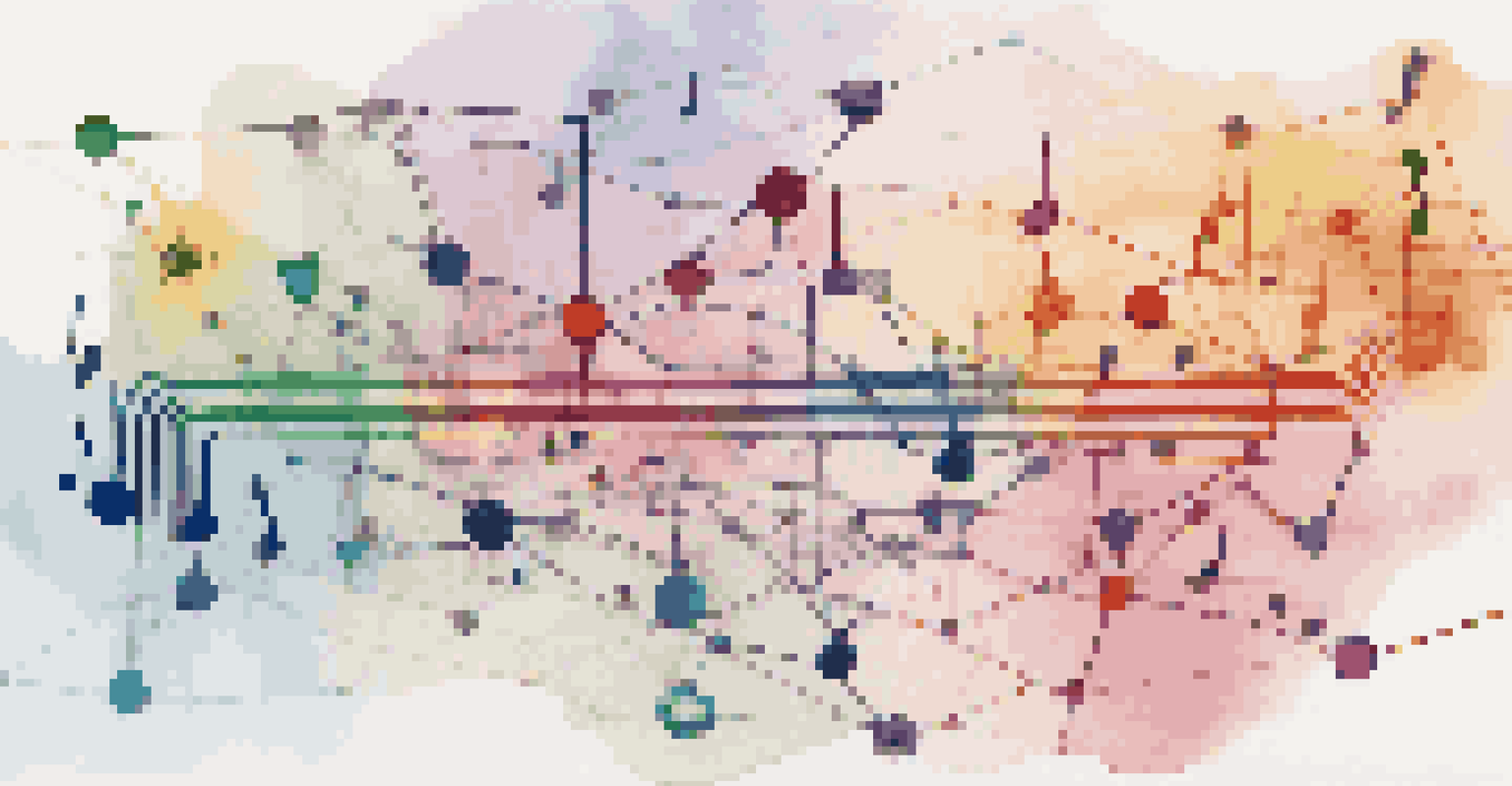Digital Music Distribution: Key Players and Platforms

Understanding Digital Music Distribution and Its Importance
Digital music distribution refers to the process of making music available online. This allows artists to reach a broader audience without the traditional barriers of physical distribution. With the rise of streaming services, understanding how this ecosystem works is crucial for musicians and labels alike.
Music is the shorthand of emotion.
In today’s digital landscape, distribution is not just about getting music out there; it’s about connecting with fans and generating revenue. Platforms facilitate this connection, allowing artists to maintain control over their work while accessing global markets. Essentially, it’s the bridge between creators and listeners.
Moreover, digital music distribution can influence an artist's visibility and success. With so many options available, choosing the right distribution service is paramount. It’s not just about uploading tracks; it’s about strategizing for maximum impact in a crowded marketplace.
Key Players in Digital Music Distribution: Who's Who
The digital music distribution landscape is populated by several key players, each offering unique services and benefits. Major companies like Universal Music Group and Sony Music play significant roles, but independent distributors like DistroKid and CD Baby are also making waves. Each of these players has a distinct approach to how music is distributed and monetized.

Major labels often provide extensive marketing and promotion resources, while independent distributors focus on democratizing access for smaller artists. This means that regardless of an artist's background, there are options available that cater to their specific needs and goals. Knowing who these players are can help artists make informed decisions.
Digital Distribution Connects Artists
Digital music distribution enables artists to reach global audiences while maintaining control over their work.
Additionally, it’s worth noting that many platforms are evolving to offer more than just distribution. Some provide analytics and promotional tools that can enhance an artist’s outreach, helping them to understand their audience better and refine their marketing strategies.
Top Digital Distribution Platforms to Consider
When diving into digital music distribution, several platforms stand out for their features and ease of use. Services like TuneCore and DistroKid allow artists to upload their music to multiple streaming services with just a few clicks. Each platform has its pricing structure and distribution network, providing options for various budgets.
The future of music is not in the music itself, but in the relationships that surround it.
For instance, DistroKid charges an annual fee for unlimited uploads, making it a popular choice for prolific artists. On the other hand, TuneCore operates on a pay-per-release model, which might be better suited for those who release music less frequently. Understanding these differences can help artists choose the right platform for their needs.
Moreover, platforms like CD Baby offer additional services such as physical distribution and sync licensing, allowing artists to explore different revenue streams. By considering these options, musicians can maximize their exposure and profit potential in the digital space.
The Role of Streaming Services in Music Distribution
Streaming services like Spotify, Apple Music, and Amazon Music have revolutionized how we consume music. These platforms not only provide access to millions of songs but also play a crucial role in the distribution process. Artists can reach listeners directly through these channels, often without the need for a traditional record label.
The accessibility of streaming has led to a shift in how music is marketed and monetized. For many artists, the goal is no longer just album sales but rather building a loyal listener base through playlists and social media engagement. This new model emphasizes the importance of visibility and discoverability within these platforms.
Streaming Services Shape Revenue Models
Streaming platforms have transformed music marketing and monetization, emphasizing visibility and listener engagement.
However, artists should also be aware of the challenges that come with streaming. While it provides vast exposure, the revenue per stream is often minimal. Understanding how to navigate these platforms strategically can help artists maximize their earnings and fan engagement.
Independent vs. Major Label Distribution: Pros and Cons
When it comes to music distribution, artists often face the decision between pursuing an independent route or partnering with a major label. Independent distribution offers more creative control and flexibility, allowing artists to maintain ownership of their work. This can be particularly appealing for those who value artistic freedom.
On the flip side, major labels provide extensive resources, industry connections, and marketing power that can significantly boost an artist’s visibility. However, this often comes at the cost of control and a share of revenue. Artists must weigh these factors carefully to decide which path aligns best with their goals.
Ultimately, the choice between independent and major label distribution depends on the individual artist’s aspirations. Many successful musicians have found ways to navigate both worlds, leveraging the strengths of independent distribution while also collaborating with major labels when it benefits their careers.
The Impact of Social Media on Music Distribution
Social media has transformed the music distribution landscape, acting as a powerful tool for artists to promote their work. Platforms like Instagram, TikTok, and Twitter allow musicians to connect with fans and share their music directly. This shift has made it easier for independent artists to gain traction and build a following.
Moreover, viral trends on social media can significantly impact music consumption, often leading to a spike in streams or downloads. For example, a catchy song featured in a TikTok dance challenge can propel an artist into the spotlight overnight. Understanding how to leverage these platforms effectively can enhance an artist’s distribution strategy.
Social Media Drives Music Promotion
Social media platforms provide artists with tools to connect with fans and promote their music directly.
However, while social media offers incredible opportunities, it also requires consistent engagement and content creation. Artists must be prepared to invest time and effort into maintaining their online presence to fully capitalize on the benefits of these platforms.
Future Trends in Digital Music Distribution to Watch
As technology continues to evolve, so does the landscape of digital music distribution. Emerging trends such as blockchain technology and direct-to-fan sales platforms are set to reshape how artists distribute their music and earn revenue. Blockchain, in particular, promises increased transparency and fairness in royalties.
Additionally, the rise of artificial intelligence (AI) in music production and marketing may open new avenues for distribution. AI tools can help artists analyze listener data, optimize their marketing strategies, and even create music. Staying informed about these trends is crucial for artists looking to remain competitive in the industry.

Lastly, the ongoing shift towards subscription-based models indicates a growing preference for personalized music experiences. Artists who can adapt to these changes and utilize new technologies will likely find greater success in reaching their audiences.